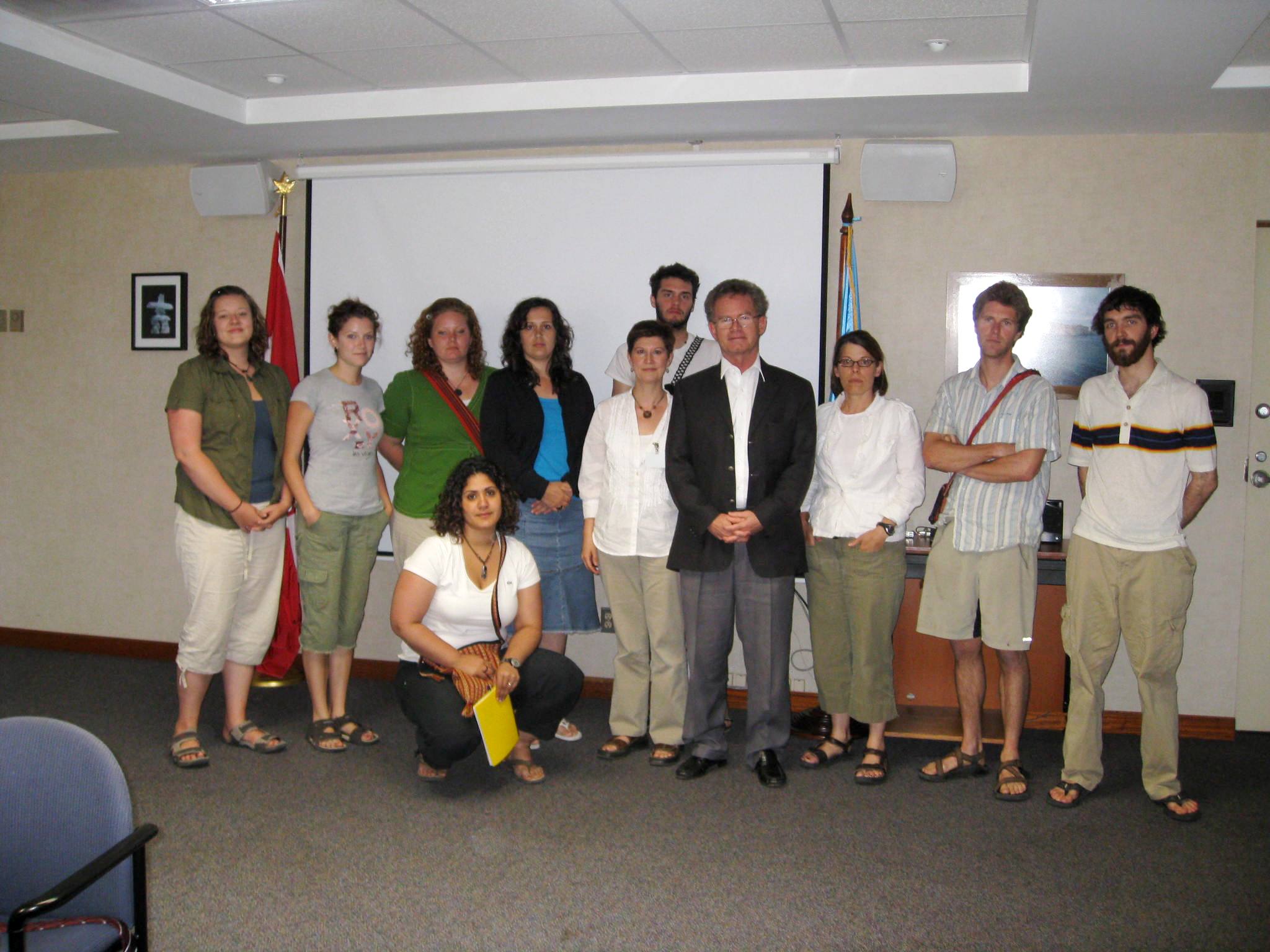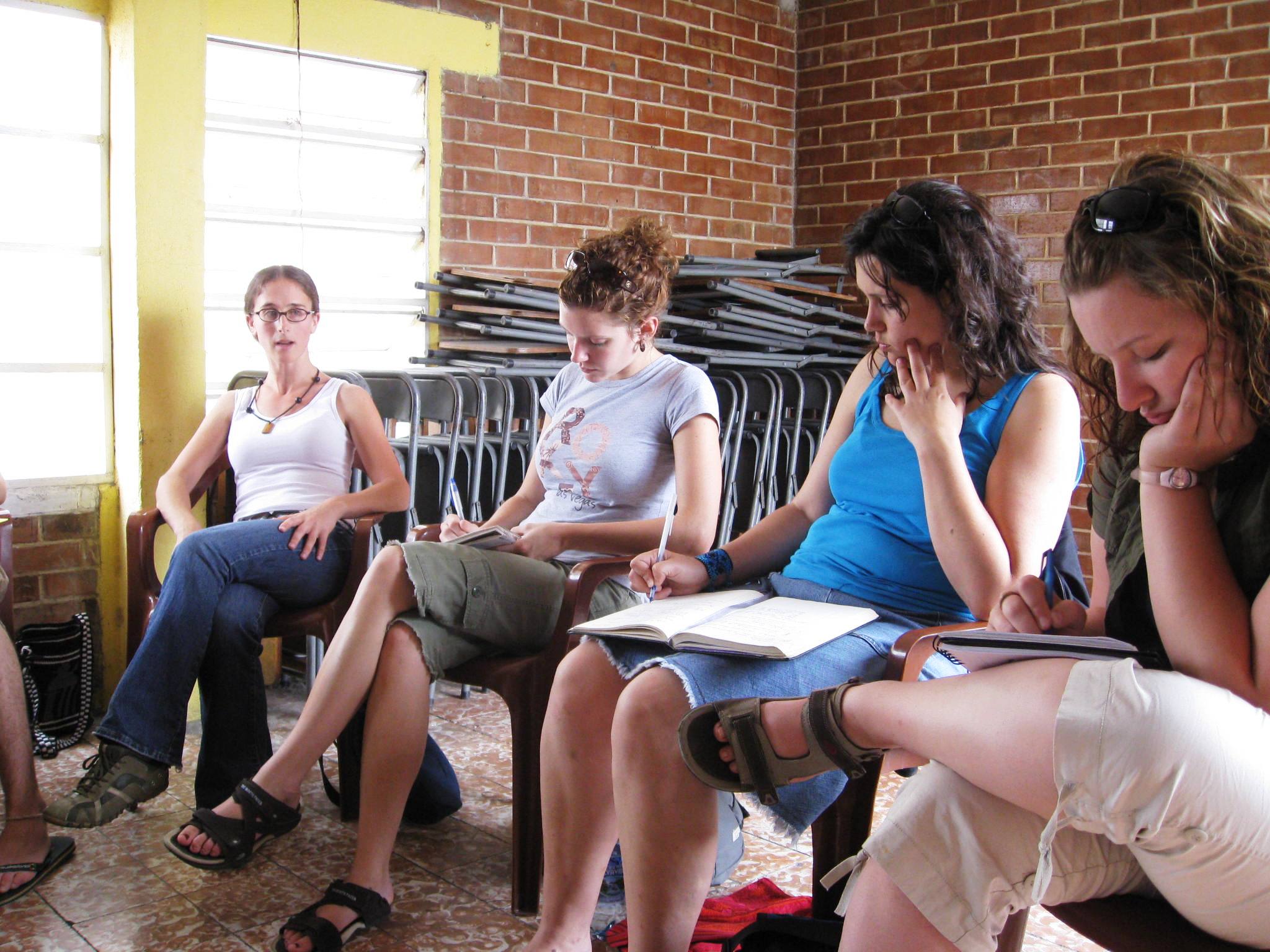GUATEMALA - MAY 2008
May 16 - Guatemala City

Today, we met with the Canadian Ambassador Kenneth Cook who was accompanied by
Sonia Garcia of CIDA. The meeting was a two hour marathon of emotion.
My overall impression of this meeting was one of frustration, for a number of reasons:
1. The red tape of the Canadian Embassy. A number of comments were made along the lines of what the embassy could not do
as opposed to what they could do.
-Regarding their position: "We do not represent Canadian companies, we do not facilitate (on behalf of) Canadian companies."
-Regarding human rights and impact assessment: "The Canadian government is not a police force for this kind of activity."
-Regarding the role of the embassy if they are made aware that a company is not living up to standards: "We would not be silent but
it is up to the Guatemalan government.
2. The (obvious) approval of the mining companies. When we pointed out that the community leaders of San Miguel Ixtahuacán were
99% against the mine, Ambassador Cook replied by telling us that statistic implies that community leaders of San Miguel Ixtahuacán were not properly informed. Obviously, this implies that if
they were informed they would undoubtedly have been in favour of the mine, because any 'sensible & informed' person would be in favour
of the mine. Ambassador Cook also stated that any efforts of scientific testing would always reveal a fault because someone will plant something
there to find. Thus, there is no point in even trying to determine the environmental impacts of these mines. Finally, Ambassador Cook's statement that "there is always an environmental cost" seemed passive and
blasé. Was the environmental costs that we witnessed truly within an acceptable range? I certainly hope not.
3. Ambassador Cook implied that since we were being toured around
by Rights Action, and that they have an obvious agenda, our opinions would be strongly biased. As a scientist, I found this to be
extremely offensive. Both personally and professionally, my opinions are informed ones. I do not and will not blindly accept others
opinions as my own.
(Photo credit: Catherine Nolin)

That afternoon, we met with Caren Weisbart, an international accompanier, and coordinator of
Coordination of International Accompaniment in Guatemala (CAIG). International accompaniment serves three purposes:
dissuasive presence; documentation of
human rights abuses; and dissemination of information on an international scale. When an individual suffering from
threats and other form of intimidation has an accompanier, the message is sent that that person is not alone. Caren explains
that there are three types of accompaniments:
-1 - Returnees/Refugees - accompaniment of returnees (sometimes a whole
community), until they have had a safe return & acquisition of land.
-2 - Genocide Cases - This type of accompaniment is
for individuals who were participating in the documentation of the genocide. The accompaniment would be low profile to protect
the identity of the individual.
-3 - International Issues - This type of accompaniment is for individuals who are suffering
intimidation from multi-national or international bodies.
(Photo credit: Catherine Nolin)
